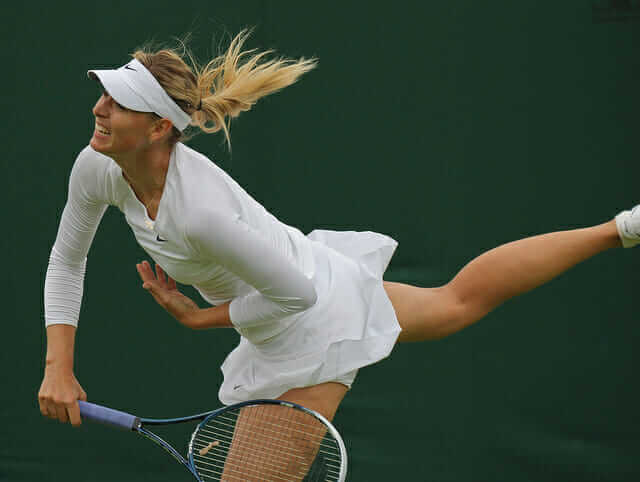Tennis elbow is probably the most famous, or infamous, injury associated with tennis and one of the most common.
The technical term for tennis elbow is lateral epicondylitis. In actuality, it’s not just the elbow joint that contributes to this condition, but also overuse of the hand, wrist, and forearm, generally involving the dominant arm.
The condition arises from damage to the muscles and tendon that wrap around the outside of the elbow.
Often the tendon is actually torn to one extent or another. As with most sport injuries, tennis elbow can either ‘creep up on you’, or have a sudden, painful onset.
The Causes of Tennis Elbow
The greatest cause of tennis elbow is overuse of the arm, which can easily happen when you’re playing tennis.
Even casual, fun matches can result in damage to the tendon, and if you’re preparing for a competition, the likelihood of developing tennis elbow will increase exponentially. Repetitive actions, such as are used in tennis, also increase the chances of developing tennis elbow.
Age also is a factor in developing this condition, and tennis elbow is most likely to develop in players over the age of 30.
Whether or not you are using the correct technique when playing will affect your elbow, too.
The proper racquet for your size and strength also plays a part in avoiding or minimizing this condition.
Symptoms of Tennis Elbow
As with most other injuries associated with sports, the first symptom of tennis elbow will be pain, and this should not be ignored.
- Pain may be mild to begin with and is located on the outside of the elbow.
- You may notice pain when you grip your racquet or shake hands with someone.
- Depending on the severity of the injury, some degree of swelling and redness may be present.
- Weakness will develop in the affected arm, especially when you bend the elbow.
Needless to say, the weakness, along with the pain and swelling, will definitely serve to keep you off the court, perhaps for weeks.
Any attempt to try to continue playing until healing has been completed could result in worse or permanent damage to the tendon.
What to Do When Your Elbow Hurts
There are no specific tests that will indicate to your doctor that you have developed tennis elbow, his or her diagnosis will be based on your description of your symptoms. You may be given topical cortisone cream to decease pain, or even shots if the condition warrants it.
Seldom is there any need for surgery, although your doctor may recommend the use of a brace until the tendon has had a chance to heal. In general, surgery will only be used when the condition has persisted for over six months.
Physical therapy is also indicated in treatment of tennis elbow and you might find it valuable to add massage therapy as well.
Massage has been proven to accelerate the healing process for this and other sport injuries. Because your racquet might be the cause of your problems, it’s a good idea to go to a pro shop for advice.
Avoiding Tennis Elbow in the Future
If you love tennis, you will not only want to get back to the court as soon as possible, but also avoid injuring your elbow in the future.
- Use exercise to strengthen the muscles of your arms. This will reduce some of the stress put onto the tendon when you play.
- Pay attention to strengthening your back and shoulder muscles. Strengthening these will make it less likely that you will cause further injury to your arm when lifting your arm above your head.
- Do not hold the racquet in a death grip – this increases the possibility of hurting your elbow.
- Warm up exercises before you begin to play can help prevent injury.
- Pay attention to your technique; the wrong technique can put too much strain on your elbow. Stay attuned to what is happening when you play and correct any moves that cause discomfort.
Tennis elbow can develop into a chronic condition if you don’t take the time to allow your elbow to heal properly.
Staying fit and including a regularly scheduled massage of the affected arm can help not only to heal the damage more quickly, but can also help prevent it in the future.
